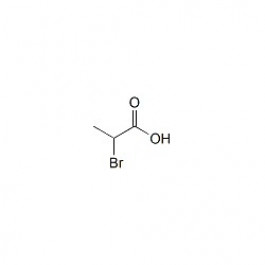New user? / Forgot your password?
0 Item | 0,00 €
Need NMR solvents or supplies? Click here and check out our ARMAR Isotopes catalog!
2-Bromopropionic acid Solution (Solvent: tert-Butyl methyl ether)
| Item number | 690715 |
| CAS | 598-72-1 |
| Formula | C3H5BrO2 |
| Molecular weight | 152,97 g/mol |
| Quantity | 1X1ML |
| Concentration | 1000 µg/ml |
| Solvent | tert-Butyl methyl ether |
| storage conditions | 4 °C |
Product Variations:
Product | Catalog No./ CAS No. | Quantity | Price | |
|---|---|---|---|---|
 | 679478 | 1X250MG | Please log in. | |
2-Bromopropionic acid solution |  | 690715 | 1X1ML | Please log in. |



